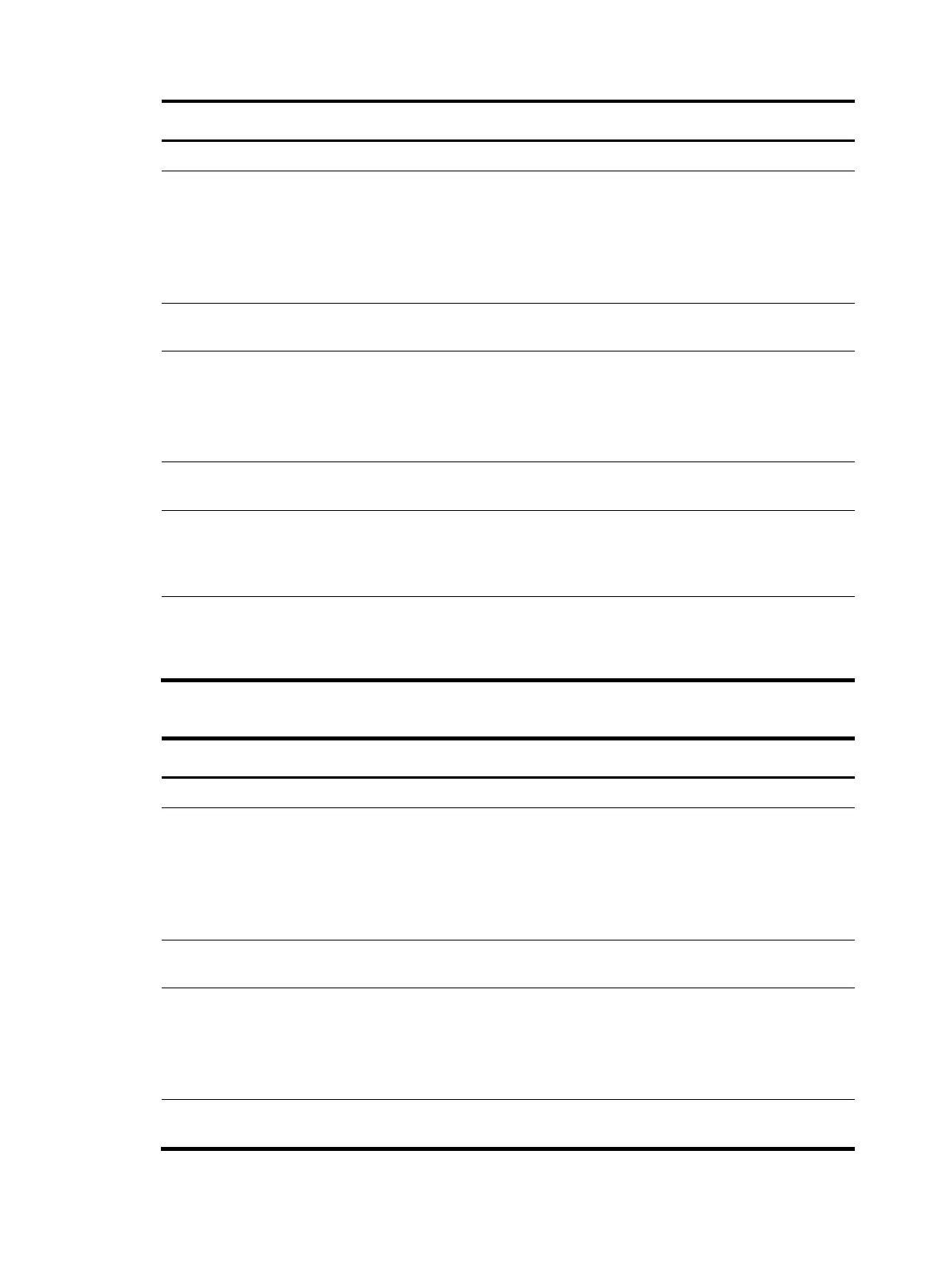191
Step Command Remarks
1. Enter system view.
system-view N/A
2. Enter BGP view or BGP-VPN
instance view.
• Enter BGP view:
bgp as-number
• Enter BGP-VPN instance view:
a. bgp as-number
b. ip vpn-instance
vpn-instance-name
N/A
3. Create an IBGP peer group.
group group-name [ internal ]
By default, no IBGP peer group is
created.
4. Add a peer into the IBGP peer
group.
peer ip-address group group-name
[ as-number as-number ]
By default, no peer exists in the
peer group.
To use the as-number as-number
option, you must specify the local
AS number.
5. (Optional.) Configure a
description for a peer group.
peer group-name description
description-text
By default, no description is
configured for the peer group.
6. Create and enter BGP IPv4
unicast address family view or
BGP-VPN IPv4 unicast
address family view.
address-family ipv4 [ unicast ]
By default, the BGP IPv4 unicast
address family view and BGP-VPN
IPv4 unicast address family view
are not created.
7. Enable the router to exchange
IPv4 unicast routing
information with peers in the
specified peer group.
peer group-name enable
By default, the router cannot
exchange IPv4 unicast routing
information with the peers.
To configure an IBGP peer group (IPv6):
Step Command Remarks
1. Enter system view.
system-view N/A
2. Enter BGP view or BGP-VPN
instance view.
• Enter BGP view:
bgp as-number
• Enter BGP-VPN instance view:
a. bgp as-number
b. ip vpn-instance
vpn-instance-name
N/A
3. Create an IBGP peer group.
group group-name [ internal ]
By default, no IBGP peer group is
created.
4. Add a peer into the IBGP peer
group.
peer ipv6-address group
group-name [ as-number
as-number ]
By default, no peer exists in the
peer group.
To use the as-number as-number
option, you must specify the local
AS number.
5. (Optional.) Configure a
description for a peer group.
peer group-name description
description-text
By default, no description is
configured for the peer group.

